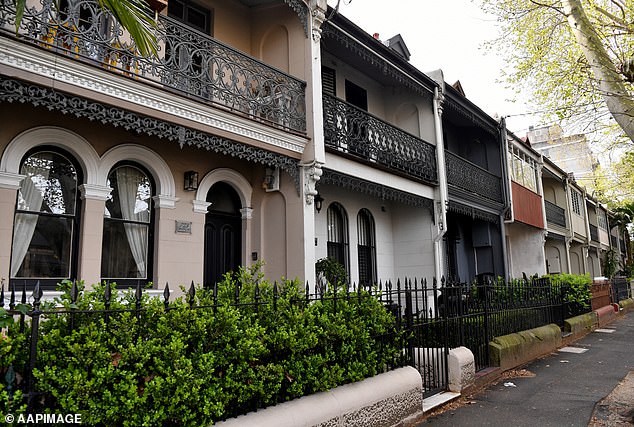Fixed-rate mortgage households set for shock increase in 2023
>
Are you in danger of falling off the ‘fixed rate mortgage cliff’? Some households could see a 60 percent increase in house payments
- Mortgage loans taken at two-year fixed rates about to expire
- Many will see interest on loans jump from two to five percent.
- Refunds will increase 40 percent and even 60 percent.
A dreaded deadline is fast approaching for many households and could spell widespread economic calamity.
Hundreds or thousands of mortgage holders this year will experience the sudden shock of paying around 2 percent interest on their home loans to at least 5 percent in what has been dubbed the “fixed-rate mortgage cliff.”
That’s because many borrowers took advantage of the Reserve Bank’s record 0.1 percent cash rate in 2021 to get ultra-low two-year fixed-rate repayments.
Many homebuyers are facing a year of financial stress as many ultra-low fixed-rate mortgage deals are nearing completion.
A Reserve Bank document released in September revealed that 35 percent of home mortgages are fixed, much higher than the long-term average of 20 percent.
However, when these offers expire in 2023, it will mean borrowers will go straight back to an adjustable-rate mortgage and see the average fixed rate jump from 2.14 percent to 5.6 percent.
For a borrower with an average $600,000 mortgage who would see their monthly payments rise sharply by at least 40 percent, a $934 increase from $2,291 to $3,225.
Some borrowers who managed to snag rates lower than the average fixed rate might be looking for a jump closer to four percent.
Lenders have to assess a potential borrower’s ability to cope with a three percentage point increase in variable mortgage rates.

Home borrowers who took out fixed-rate loans last year face a tough time in 2023, as their monthly payments increase by 40 percent or even 60 percent in some cases.
But since May, the RBA’s cash rate has already soared by 300 basis points, the most severe pace of monetary policy tightening since the Reserve Bank published a target cash rate in January 1990.
The bad news doesn’t end there, however, as the big four banks expect at least two more rate hikes in the coming months, which would push the interest repayment rate to 6.1 percent.
RBA figures show that the 50 per cent of households exiting a fixed-rate mortgage in 2023 will face an immediate jump of paying 40 per cent more.
But more than 11 percent of households will have to contribute an additional 60 percent.
If, as widely expected, rates rise twice again, the RBA calculated it would put 14.6 percent of mortgage holders at serious risk of default.

There are fears that defaults could put strong downward pressure on the property market.
The scenario is starting to sound worryingly like the US real estate crash of 2008, where widespread defaults put large financial institutions in trouble, with some even going under, leading to a seizure of credit.
That situation is much less likely with Australian banks, which operate under stricter credit regulations, but defaults could send the housing market into a tailspin.
Home borrowers would be forced to sell in an environment where banks could not lend as much, causing house prices to fall.
In the worst case, the value of a property could fall below the balance of the mortgage on it, a situation known as negative equity or being ‘underwater’.
The Pain and Gain report from real estate data group CoreLogic predicted that “2023 is expected to be a more testing year for the resale market.”
“Most of the outstanding fixed loan terms secured through the pandemic will have expired by the end of next year,” he said.
“This could drive a more motivated sale in a high interest rate environment, even if property sellers have to take a loss.
“The main risk is an ever-rising rate environment, as most fixed-rate loan terms are due until the end of next year.”
The Reserve Bank of Australia has, since May, raised rates for eight consecutive months to a 10-year high of 3.1 percent and more interest rate hikes are expected next year to tackle the worst inflation in 32 years. .
